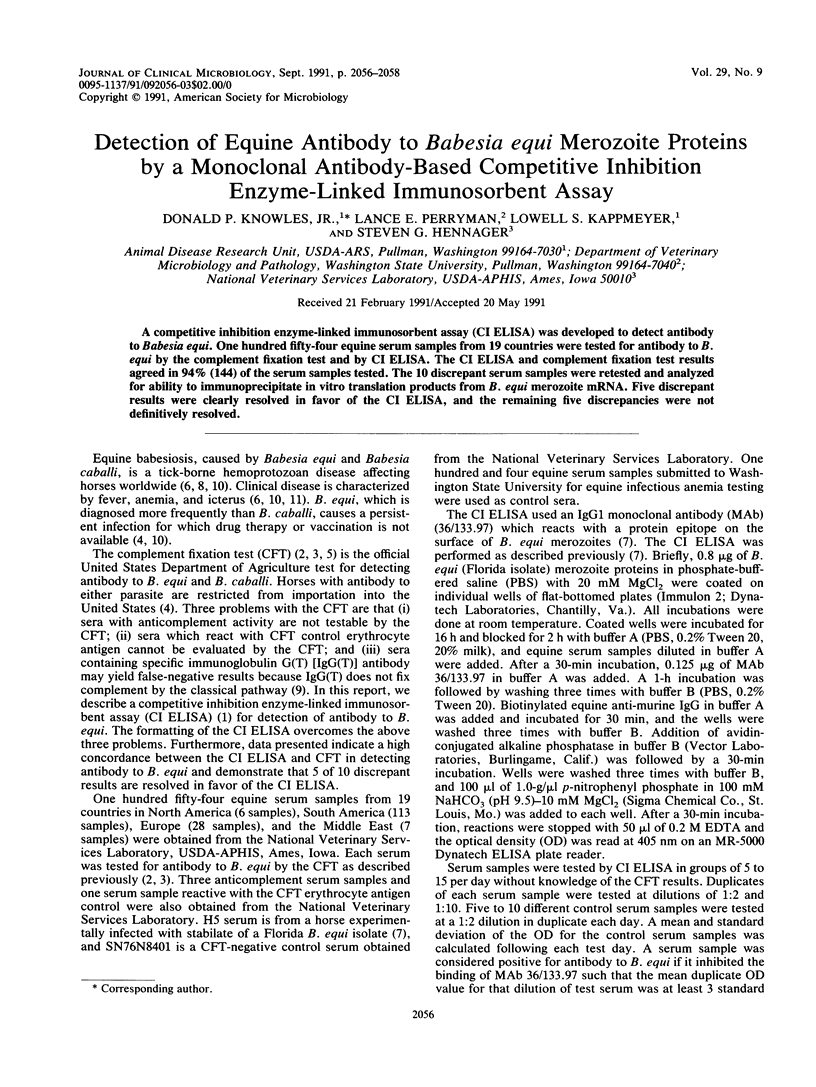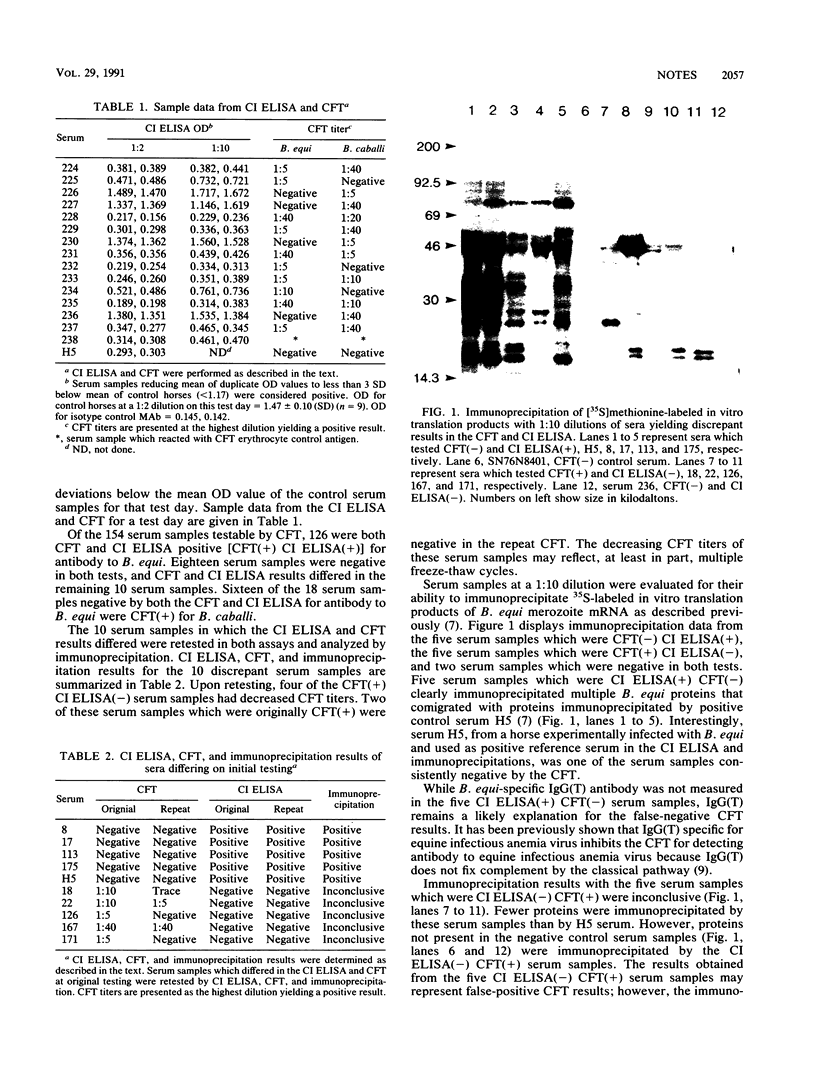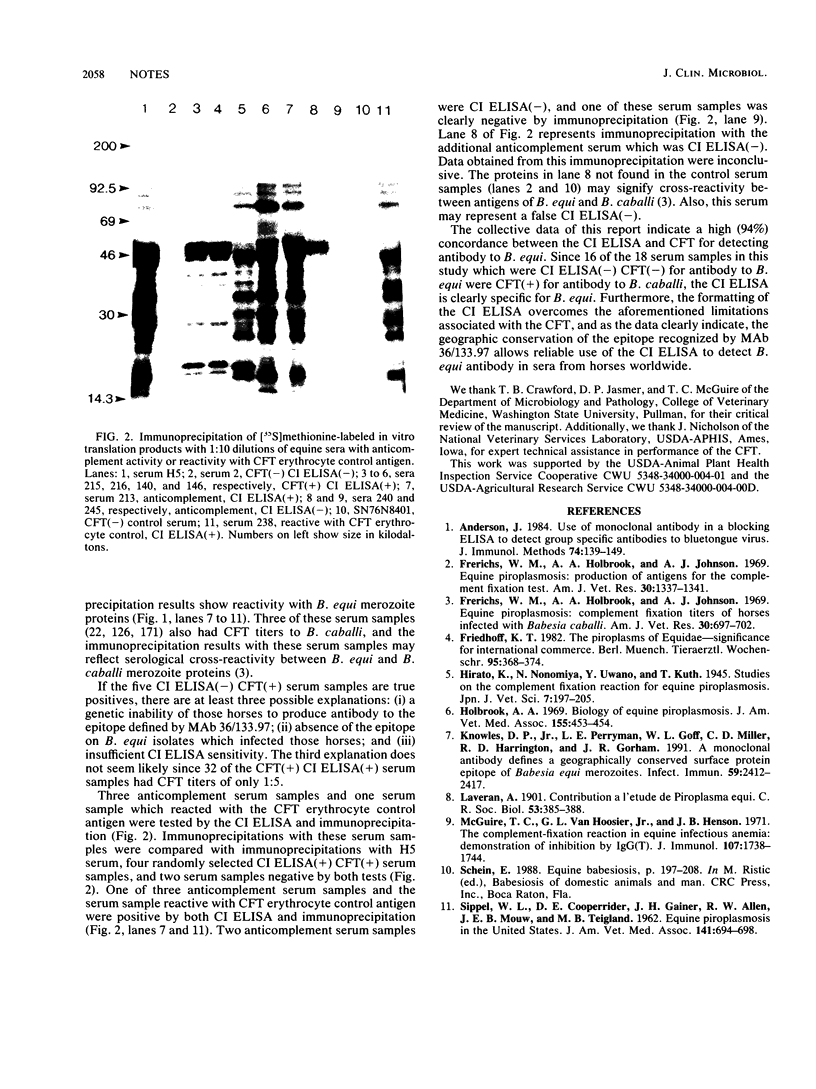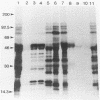Abstract
A competitive inhibition enzyme-linked immunosorbent assay (CI ELISA) was developed to detect antibody to Babesia equi. One hundred fifty-four equine serum samples from 19 countries were tested for antibody to B. equi by the complement fixation test and by CI ELISA. The CI ELISA and complement fixation test results agreed in 94% (144) of the serum samples tested. The 10 discrepant serum samples were retested and analyzed for ability to immunoprecipitate in vitro translation products from B. equi merozoite mRNA. Five discrepant results were clearly resolved in favor of the CI ELISA, and the remaining five discrepancies were not definitively resolved.
Full text
PDF


Images in this article
Selected References
These references are in PubMed. This may not be the complete list of references from this article.
- Anderson J. Use of monoclonal antibody in a blocking ELISA to detect group specific antibodies to bluetongue virus. J Immunol Methods. 1984 Nov 16;74(1):139–149. doi: 10.1016/0022-1759(84)90375-2. [DOI] [PubMed] [Google Scholar]
- Frerichs W. M., Holbrook A. A., Johnson A. J. Equine piroplasmosis: complement-fixation titers of horses infected with Babesia caballi. Am J Vet Res. 1969 May;30(5):697–702. [PubMed] [Google Scholar]
- Frerichs W. M., Holbrook A. A., Johnson A. J. Equine piroplasmosis: production of antigens for the complement-fixation test. Am J Vet Res. 1969 Aug;30(8):1337–1341. [PubMed] [Google Scholar]
- Friedhoff K. T. Die Piroplasmen der Equiden--Bedeutung für den internationalen Pferdeverkehr. Berl Munch Tierarztl Wochenschr. 1982 Oct 1;95(19):368–374. [PubMed] [Google Scholar]
- Holbrook A. A. Biology of equine piroplasmosis. J Am Vet Med Assoc. 1969 Jul 15;155(2):453–454. [PubMed] [Google Scholar]
- Knowles D. P., Jr, Perryman L. E., Goff W. L., Miller C. D., Harrington R. D., Gorham J. R. A monoclonal antibody defines a geographically conserved surface protein epitope of Babesia equi merozoites. Infect Immun. 1991 Jul;59(7):2412–2417. doi: 10.1128/iai.59.7.2412-2417.1991. [DOI] [PMC free article] [PubMed] [Google Scholar]
- McGuire T. C., Van Hoosier G. L., Jr, Henson J. B. The complement-fixation reaction in eguine infectious anemia: demonstration of inhibition by IgG (T). J Immunol. 1971 Dec;107(6):1738–1744. [PubMed] [Google Scholar]
- SIPPEL W. L., COOPERRIDER D. E., GAINER J. H., ALLEN R. W., MOUW J. E., TEIGLAND M. B. Equine piroplasmosis in the United States. J Am Vet Med Assoc. 1962 Sep 15;141:694–698. [PubMed] [Google Scholar]




